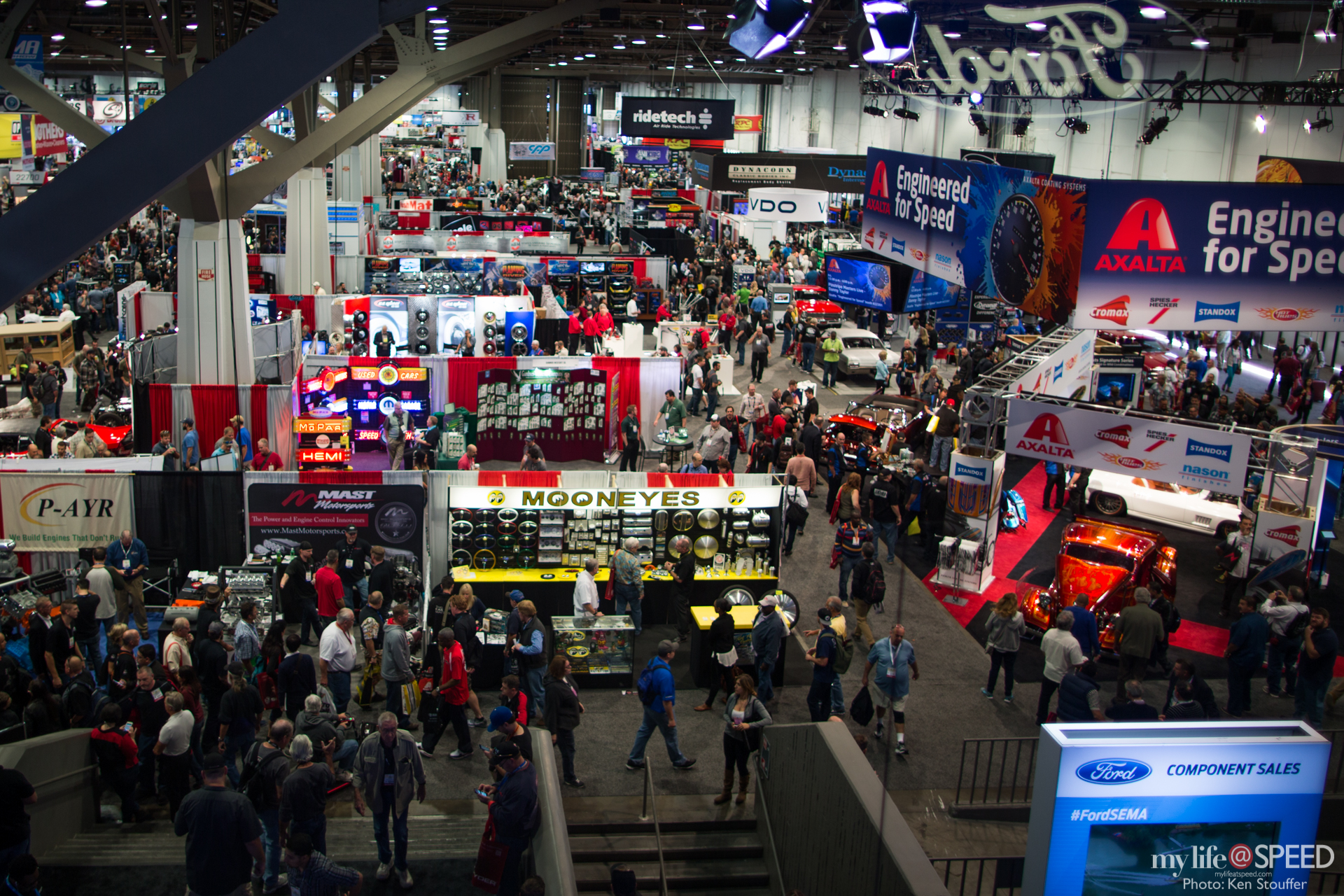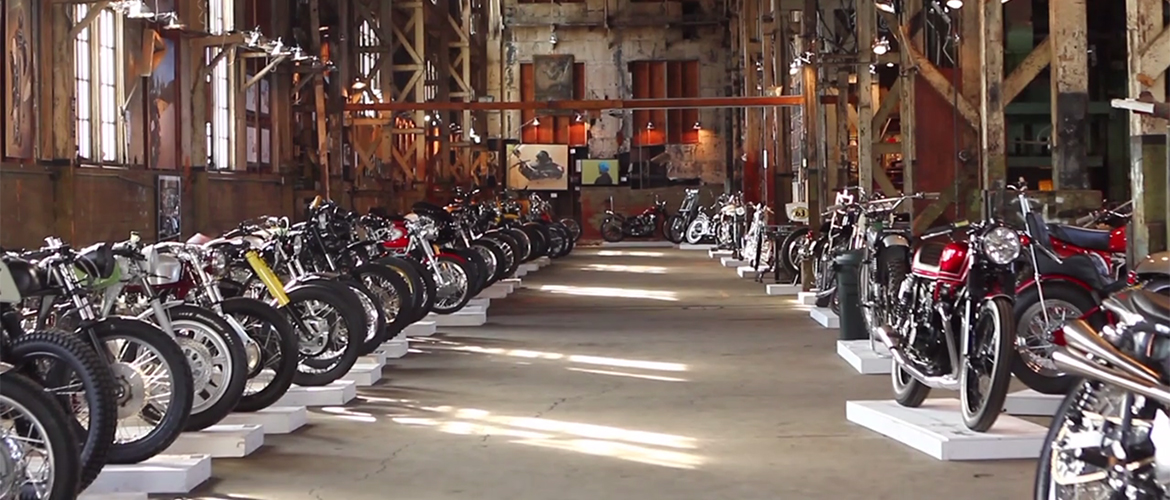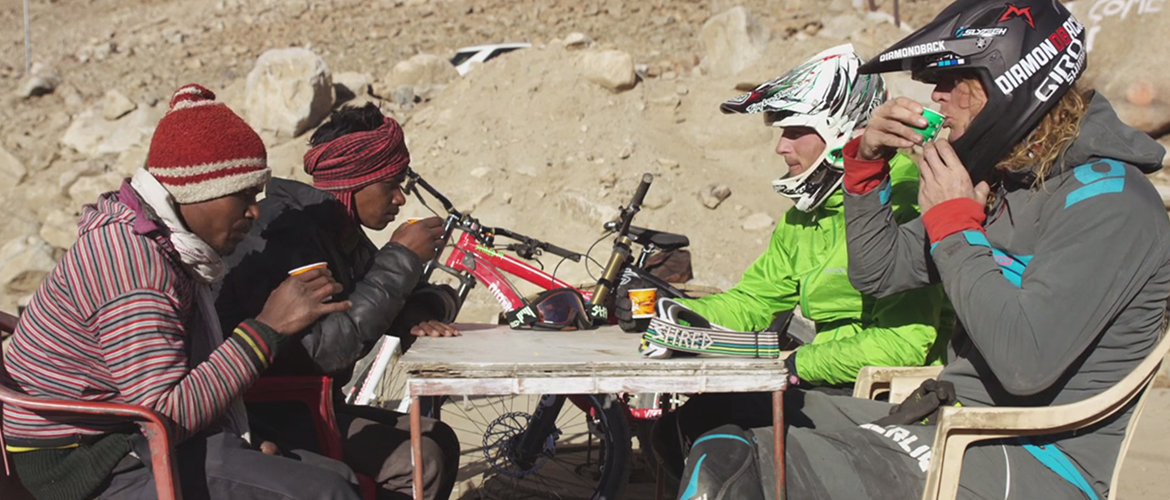A café racer is a vintage motorcycle, but for those who own and love them, they are so much more than that. Their story began in 1950’s England when these old bikes were brand new. At the time, motorcycles weren’t powerful and there was a growing group of young people who were obsessed with going fast. Café racer was originally a slur by hardcore motorcyclists. They believed the youngsters’ goal was to look tough, as they raced from one café to another. As it turned out, those kids and their toughness were greatly underestimated. Somewhere along the line the name that made them out to be a joke, was commanding respect and the occasional twinge of fear.

What’s the ton?
The magical number on the speedometer for them was 100, also known as the ton. It was every rider’s dream to achieve and surpass 100 mph. Since factory-produced bikes weren’t capable, they used the little coin at their disposal to modify the bikes, taking cues from their contemporary racers. The methods employed back then are still used in café racer builds to this day. A standard motorcycle was first stripped of any excess weight. Then the bike was made as aerodynamic as possible. The gas tank was dented so that a rider could tuck their knees in and get as low as possible to minimize drag. The engines were tuned to get every extra iota of extra power out of them. I can pretty much guarantee that the words “street legal” were hardly considered in pursuit of the blessed ton. It was a different time.
Another earmark of the café racer movement was the creation of hybrid bikes. Elements from various motorcycles and manufacturers were combined to create unique models. The best known of these is probably the Triton, which is a Triumph Bonneville’s engine married to a Norton’s featherbed chassis. A Royal Enfield frame holding a Norton engine made a Norfield motorcycle. A rare example is the Vincati which is produced by putting a Vincent engine in a Ducati frame. Interestingly enough, their desire to break the mold of conventional motorcycle design led to the creation of a new one. To this day, it’s easy to spot a café racer, even if it isn’t parked outside of a café.

Breaking the Law, Breaking the Law
All this unbridled innovation against the establishment coupled with youthful defiance was not appreciated by the police. The Bobbies had a real problem keeping law and order with these ton-up boys blazing through her majesty’s streets. It also didn’t help that the café racers’ dress code was outlandish for the time. They idolized American rockabilly musicians and took to wearing black leather jackets and boots with greasy pompadour hairstyles. Of course, a club’s patch was sewn onto a prominent on their jacket so all could see to which tribe they belonged. They all liked living on the edge and doing whatever, whenever they wanted. The more authorities tried to suppress their activities; the number of “Rockers” continued to grow. Disaffected youths found strength in each other and it wasn’t just about fast motorcycles anymore but the lifestyle. Rockers also got into dust-ups with scooter enthusiasts called “Mods.” These rival groups caused gave the police nightmares while newspapers made them out to be the end of civilization as the old folks knew saw it.
In hindsight, we know that most of the reported violence wasn’t their fault. As a result of the negative publicity, those young mechanical visionaries received neither the acknowledgment nor accolades deserved for their labor of love. Perhaps it was a sign that the café racer movement was destined to end, or rather, suspend? Soon manufacturers were producing bikes capable of making the ton with no special customization required at all. The café racers eventually became nothing more than a style that was increasingly irrelevant. Even the hallowed doors for the Ace Café in London closed in 1969. Those Rockers grew up to produce a new generation of kids, but never forgot their own reckless youth. So it was only a matter of time before the café racers started to come back.

Everything old is new again
In the late 90’s, Rocker reunions started taking place drawing thousands who sought to relive their glory days. The Ace Café reopened and once again became the destination for leather-clad pilgrims from the UK and beyond. Young people inherited motorcycles and restored them, while others had to obtained donor bikes from junkyards and bike shops. Whether under the tutelage of their elders or getting advice from how-to books and online forums – café racer bikes were being built and their comeback was in full effect. New clubs were formed while old clubs now have chapters outside of the UK. There are even Rockers versus Mods events sans fisticuffs. Of course, some of the older guys never actually put away their leathers and wouldn’t dare leave home unless their pompadour was perfect. Thankfully some original builders are still around and not only have more than enough business to stay in the black, but apprentices willing to carry on the trade as well.
As with just about everything in the modern world, the internet is an excellent way for builders, riders, the casual and the curious to immerse themselves in café culture. Websites like Do the Ton Café Racers, Bike EXIF, Pipeburn and others get thousands of hits daily. They’re a great way to see beautiful bikes, read details about the builds and get familiar with names like Classified Moto, Dime City Cycles, Roland Sands, Leon Stanley and many, many more. Just about anything can be found and bought online from old bikes to specialty parts. Original pieces that can’t be found, can be made and it’s never been easier to locate skilled fabricators. Even if you don’t have the time to build one, you can just buy a fully finished café racer in just a few clicks. Social media has brought the community even closer as builders answer questions and tweet photos of their latest projects. Yet the digital communication doesn’t come close to the experience of meeting in person to show off your bikes, talk about them and of course, go for a ride. All the terabytes of data in the world can’t hold a candle to that.

Café Racer: Magazine and TV Show
In 2008 Café Racer magazine came on the scene. Soon the bimonthly publication was accompanied by an eponymous television show on Velocity (formerly Discovery HD Theater). Viewers were treated to interviews with original café racers and builders, as well as projects from start to finish. One of the more memorable projects was the father-and-son Vincati build by Sidney and Matthew Biberman. The story of Big Sid’s Vincati, has been warming and breaking the hearts of bike fans all over the world. (RIP Big Sid.) Featured builders have completed some daring projects by making café racers out of very modern machines. John Ryland of Classified Moto envisioned a 1987 Honda XL600R’s transformation into a sweet ride for actress, Katee Sackhoff.
In anticipation of Café Racer’s fifth season on Velocity, I chatted with Mike Seate about the magazine, the TV show and of course, the cool bikes.
MLAS: What made you decide to start the magazine?
MS: I worked for just about all the other magazines: Motorcyclist, Cycle World, Iron Works; and I realized there was no café racer magazine. Like there’s a magazine for every other type except café bikes. So it was high time.
MLAS: We know you were a working writer with a column in Pittsburgh. Was the magazine started as a “basement project” or did you guys just go for it?
MS: Yeah we grew. It was pretty small. Actually I was still working at a newspaper at the time. So I would come into the newspaper office at night and write the stuff for Café Racer.
MLAS: Was the TV show always part of the plan?
MS: No, no, (emphatically) that just came about. I used to work for SPEED Channel for a show called Two Wheel Tuesday. I used to produce short films for them and we’d done a couple of pieces on café racers which were well-received. They got good ratings. While we were doing the first edition of the magazine, I went to Chet Burks Productions, the people in Atlanta that were the content providers I worked for and Chet was a big café racer fan too. He said, “Why don’t we do a documentary film about them, café bikes?” So it was Chet who put up the money for us to fly to England for the first month to interview all the old guys and get the footage and all that stuff.
MLAS: That was one of my favorite aspects of the earlier episodes of the show. You really showed the history of the café racers and quite frankly that’s what made me into a fan. There was so much going into it! The rebellion aspect and the kids just trying to build their bikes and just be themselves, that was really cool.
MS: See that was my favorite part too! It was really hard tracking down all that old footage. It was tough but it was worthwhile; and to be honest I’m most proud of having been able to tell those stories. Those guys, they risked their lives back in the 50’s and 60’s to make motorcycles go faster; and their story hadn’t been told to a larger audience. Now the show is in I think 130 countries, I’m really proud that we get to tell their story.
MLAS: I love that those guys are still doing the same thing that they were doing in the 60’s – today. Even the outfits!
MS: Oh, it’s amazing! We just saw Dave Deegan from Dresda [Tritons and Triumph Tuning] who pretty much invented the Triton. He’s seventy-seven now and he just told me he just did a track day, and he’s still going nights to ride.
MLAS: Oh yeah, we know some people like that who are in their golden years and still racing the Pikes Peak International Hill Climb. They’ll still do it. They’re not stopping. That’s just life!
MS: It’s great.
MLAS: Was it ever difficult getting builders to be featured on the magazine or TV show and give access to show what goes on in their shops?
MS: It can be. Some of them are artists. They’re very temperamental. We had one builder whose wife wouldn’t let us use the bathroom. We had another one whose wife wouldn’t allow us show the façade of the house. She didn’t want people coming there. We’ve had people who got halfway into a build and just quit! Just said, “I don’t want to do that!” and dropped the tools and said, “Get out.” So it can be difficult but there’re a lot of them out there.
MLAS: We know that sometimes a project can take weeks or months. Can you tell us about some of the logistics involved with filming a build for Café Racer?
MS: It’s very complex. Sometimes we have been on location for a week at a time. Then when they have to fabricate a part we’d leave and fly back to Atlanta. Then when they get the part built, we’ll have to come back and finish it. It’s a long, long process!
MLAS: The café scene is everywhere now. Will we see stories from other countries in the future?
MS: We were considering Japan and Australia for next year. Yeah, we sure are.

MLAS: That would be awesome! What do fans ask you get about the most when you go to events?
MS: I don’t go to events anymore. That’s one thing I had to give up because people will just bug you to no end. We still do two shows every year: one in Los Angeles and one in Ohio where we invite our readers to come out and show off their café bikes. We’ll have a competition with trophies. I’m not a very social motorcyclist. I use my motorcycle to get away from other people. I just don’t go to rallies and events. I like to go to the middle of nowhere and do 300 miles in a day or a weekend all by myself. When I do they always ask, “How can I get my bike on the show?” or “Can I get my girlfriend on the show?” That’s what they want to know, “How can I be on the show?”
MLAS: You’re said to have a large bike collection. How many do you have?
MS: Not very large. This is my twentieth bike. I have a friend who has sixty-three and Billy Joel the singer, is a friend of mine and he just got bought his ninety-fourth, so it’s small compared to theirs.
MLAS: What’s your dream bike? Is there anything that you want in your collection?
MS: Yeah, I’d love to have a Vincent, but I’m a cheapskate and not going to spend $60,000 on a motorcycle. I could fill up a garage for $60,000 with bikes so I don’t think I’m ever going to own one.
MLAS: Congratulations on Café Racer’s renewal on Velocity. Can you give us any teasers of what we’re going to see in the new season?
MS: In Season 5 of Cafe Racer TV which will broadcast on Discovery Velocity this fall, we’ve got eight, hour-long episodes, each featuring two complete custom cafe racer builds. Among them is an incredible story featuring ProStar motorcycle drag racing champ Rickey Gadson who is rebuilding a 1977 Honda CB750 that once belonged to his father. Rickey learned to race on the mean street of Philadelphia as a teenager on this bike which his Father was tragically killed while riding a few years later. In another episode, I’m handing off my 2013 Honda CB1100 retro to five other hosts of Velocity program who will each take a turn transforming it into a cafe racer.

MLAS: We saw the call on Café Racer’s Facebook page for builders to be featured on the TV show. What are the requirements and how can interested persons apply?
MS: The show’s builders have already been chosen, I’m afraid.
MLAS: Do you have any advice for any regular people wanting to start their own café bike project?
MS: When embarking on a custom cafe build, the best way forward exhibited by our builders seems to follow a pattern:
Make a drawing or sketch of the bike you have in mind, followed by a parts list. Map out the cost of a donor bike and to keep costs manageable, sell parts you don’t need on eBay. Visit local vintage or custom bike shops when you need help with fitting parts or fabricating as professionals can be invaluable with tools or ideas. And finally, follow your own mind- don’t get caught up with negative talk on Internerd forums, just build what you want.
A Final Word
One prevalent quality among motorcycle enthusiasts I’ve discovered (with the ones I know anyway) is passion. Their bikes are more than a mere accessory but an indispensable part of their lives. Cowboys in old Western movies didn’t walk off into the sunset – they rode; and for modern cowboys, the motorbike is their trusty steed. They savor the freedom of the open road, to feel like you’re flying like wind above the asphalt with the sun’s warmth on your back. Think about the children’s’ game, Secret Message. More often than not, the original secret message told to the first child is completely different by the end of the line and ridiculous by comparison. Has the secret message of the café racer movement passed down from the 1950’s to present-day been twisted into something ridiculous? Does this current crop of young of motorcyclists relish the self-determination that comes with non-conformism or is their only goal to look fashionably dangerous while parked outside a Starbucks? I don’t suggest throwing in the towel on the kids yet.
We shared a video last year of ten year-old Zeke DeZeeuw who presented the Honda CB200 he built at the Barber Vintage Festival. His Dad, Patrick, documented the build with YouTube videos and indeed, Zeke did a lot of the work (under Patrick’s close instruction) including welding! Just listening to the boy talk about “Lucky” and how good he feels knowing that his hard work and dedication paid off. That right there is the kind of passion that drove the café racer pioneers. That’s the secret message transmitted perfectly from one generation of bike guys to another. Take an old machine, fix it, build it, and fulfill your vision of what it’s supposed to be. Tweak it to go faster or slower. Decorate the tank. Go on weekend jaunts to jumbles aka swap meets to get parts. Most importantly, ride your bike until it can’t go anymore, then strip it down and bring it back to life again.
Thanks to Mike Seate for taking time to chat and allowing us to use photos from the Café Racer website. You can keep up with Mike and the team through websites for the magazine, TV show and of course, social media:
Facebook: https://www.facebook.com/CafeRacerTV
Twitter: http://twitter.com/CafeRacerTV
Correction dated February 27, 2014:
In the interview, Mike Seate actually said, “I’m not a very social motorcyclist” not “I’m not a very soulful motorcyclist.” Sorry, Mike. – MH




